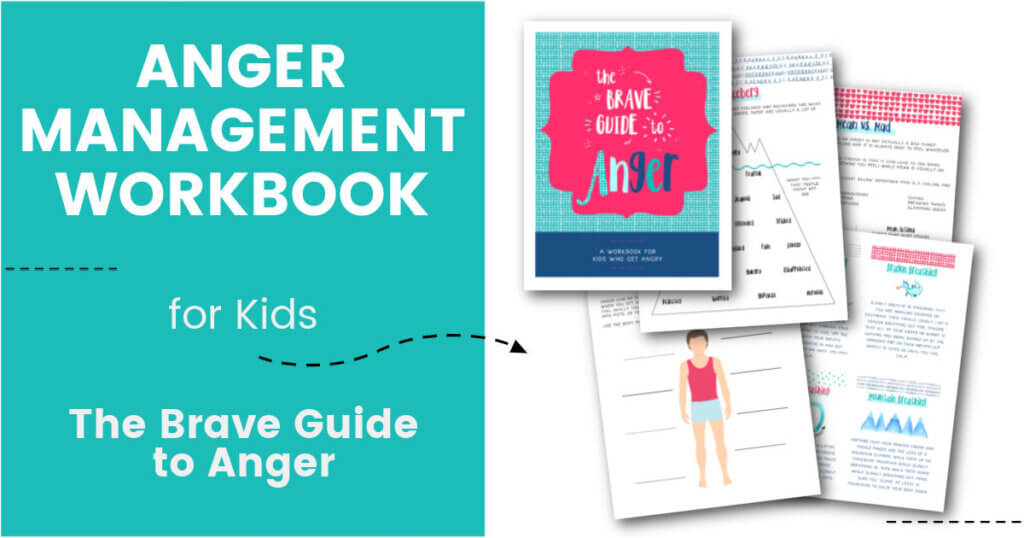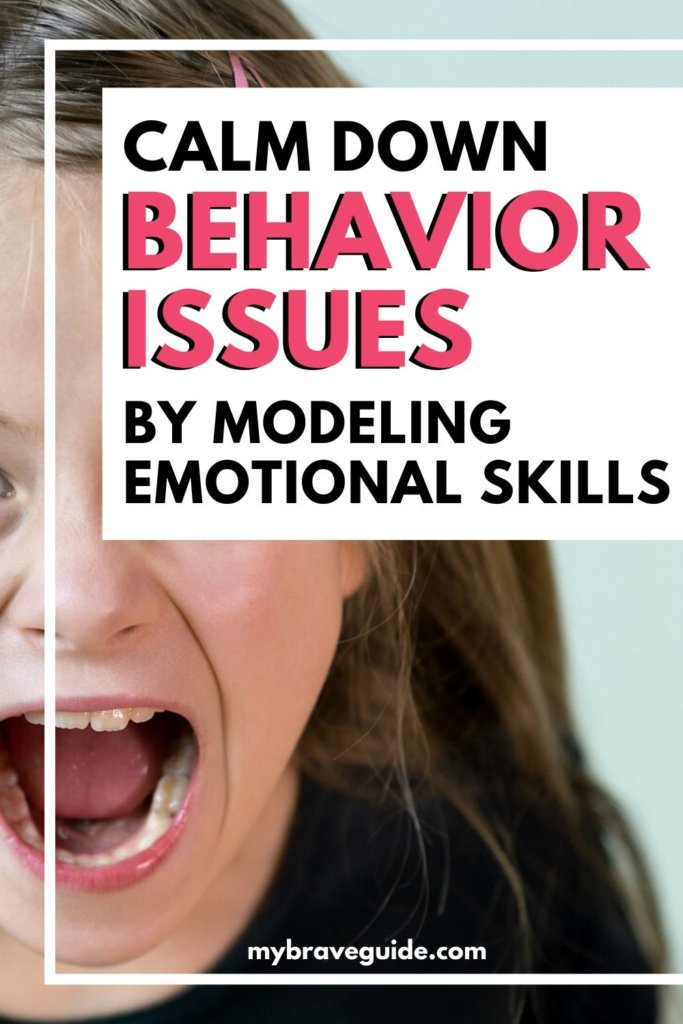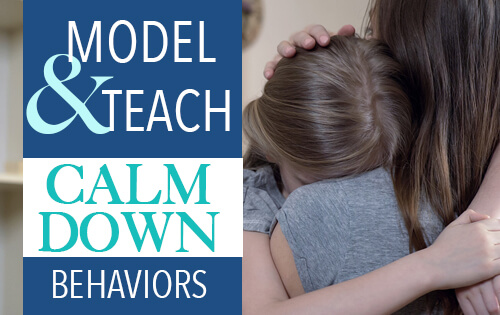Teaching children how to react to their emotions and how to utilize calm down skills or coping skills can be a game changer for angry kids and their parents. Shifting towards teaching coping skills instead of disciplining bad behaviors can be so much more effective.
As a parent, having a purpose and a goal in the midst of the chaos of tantrums, meltdowns, and outbursts helps you feel slightly more in control. (Although, let’s be honest, dealing with a tantruming child feels really out of control!)
This article is the final article in a series on stopping tantrums in older children. The other articles provide quicker, short term solutions. You can start at the beginning of this series by clicking here. Or read on for today’s article which is more of a long-term strategy.
This post may contain affiliate links.
Modeling Coping Skills and Teaching Calm Down Skills
Today, we are going to examine how to teach and model calm down skills (coping skills) when you are dealing with an older child who is having a lot of tantrums.
I have to preface this by saying that this technique is not always a quick fix solution, but over time, it really can stop tantrums and meltdowns. Coping skills will be a lifelong tool that your child can use to calm their anger even into adulthood!
Dealing with big emotions can be hard for everyone, grown-ups included. Older kids, between the ages of 5 – 10 or so are working to learn the skill set to handle big feelings. They need to be taught positive coping strategies and learn how to tell you what they are feeling or struggling with instead of acting out to express emotions.
The best way for kids to learn these skills is to watch you model positive communication and calm down techniques for yourself. When your child is throwing a tantrum, you are likely to feel pretty frustrated, angry and upset. After all, this is generally what your child is aiming for with their behavior.
When a child finds it hard to communicate what they are feeling, they create a situation where those around them begin feeling the same emotions that they are experiencing such as frustration, anger, etc. Keep this in mind as you work on staying calm in the midst of the shouting, yelling, and tantruming.
Here are some different coping skills that you can model for your child when they are in the middle of a tantrum.
Taking A Break/Time-Out
Taking a time out to calm down is a great way to deal with intense emotions. When you are in the middle of a melt-down, let your child know what you are feeling and that you have decided to take a time out, but that you will be back to talk about this in a few minutes once you feel calmer. (I have a whole article that provides a fun little trick for taking a “mommy time-out” if this is hard to accomplish with your screaming child. Click here to read about this fun trick!)
Counting to Calm Anger
Counting to 10 or 20 before responding in anger can be a great way to not say things that you don’t mean. To try this technique in the middle of your child’s tantrum say something like, “I am going to take a second to count to 10 before I respond so that I don’t say something I don’t mean right now since I am feeling pretty frustrated.”
You may also want to encourage your child to count with you if they are calm enough.
Deep Breathing
Just like counting, deep breathing can have a positive effect on your mind and body when you are feeling frustrated or angry. You can use this all throughout a tantrum by taking slow deep breaths in and out.
You can also be more intentional about this and let your child know that you are going to spend a couple minutes doing some deep breathing so that your heart stops beating so hard and your mind calms down. (Describing what is going on in your body when you feel angry can help your child learn to put words to their anger as well.)
For deep breathing ideas and techniques, check out this article for 5 Kid-Friendly Breathing Techniques.
Use a Problem-Solving Worksheet
I love using problem-solving worksheets because they provide a concrete way for me to organize my thoughts and feelings and try to resolve whatever problem or issue I am facing. If your child is in the middle of a tantrum, they may not be willing to do a problem-solving worksheet with you, but you can still pull one out and fill it out yourself.
If you decide to do a Problem Solving Worksheet, I would recommend talking through it out loud as you go so that your child can watch your thought process. You should also work on solving your problem, not your child’s problem if they are not participating. So, for example, your problem may be that you are trying to calm your child down.
If your child is willing to work through a problem solving worksheet on their own or with you – even better! Let them choose what the “problem” is in their own words! Also, allow them to contribute without too much pressure or input from you. Give them time – you will be surprised at what they can come up with when allowed the space to solve their own problems.
You can download a free problem-solving worksheet in the Parenting Resource Library.
Use a Sensory Tool
Sensory tools such as thinking putty, fidget spinners, or pipe cleaners are great for focusing excess energy so that you are able to focus. If your child is throwing a tantrum, grab one of these tools and use it while you work on engaging your child.
Again, it is helpful to talk through your actions, so saying something like, “I am feeling a little overwhelmed with the screaming right now so I am going to grab this pipe cleaner and spin it around my finger so that I can try to stay calm and focused on you.”
Use Good Communication Skills
Modeling good communication that includes “I statements” and naming emotions can be very helpful for children to witness. Setting an intention to model good communication during a tantrum can help you stay calm and focused and have the added benefit of teaching your child how to do so themselves. If this is an area that your child (or you) need to work on, check out the Be Heard Method Course which is full of resources that teach good listening and communicating skills.
Use Calm Down Skills Cards
Calm down cards are one of my new favorite tools. I carry them in my purse so that I am able to use them anywhere. In the middle of your child’s tantrum, you could use calm down cards by stating, “I am feeling frustrated and like I need to take a minute to calm down. I am going to use our calm down cards right now. I will be able to continue this discussion in a minute once I feel calmer.” Then, choose a card and doing the activity listed.
Additional Tools for Managing Anger in Kids

If you have a child who truly struggles with their anger and could use some additional skills in learning to recognize, calm, and manage their anger, please check out the Brave Guide to Anger. It is full of activities, games, crafts, and worksheets that help kids learn to manage their anger.


